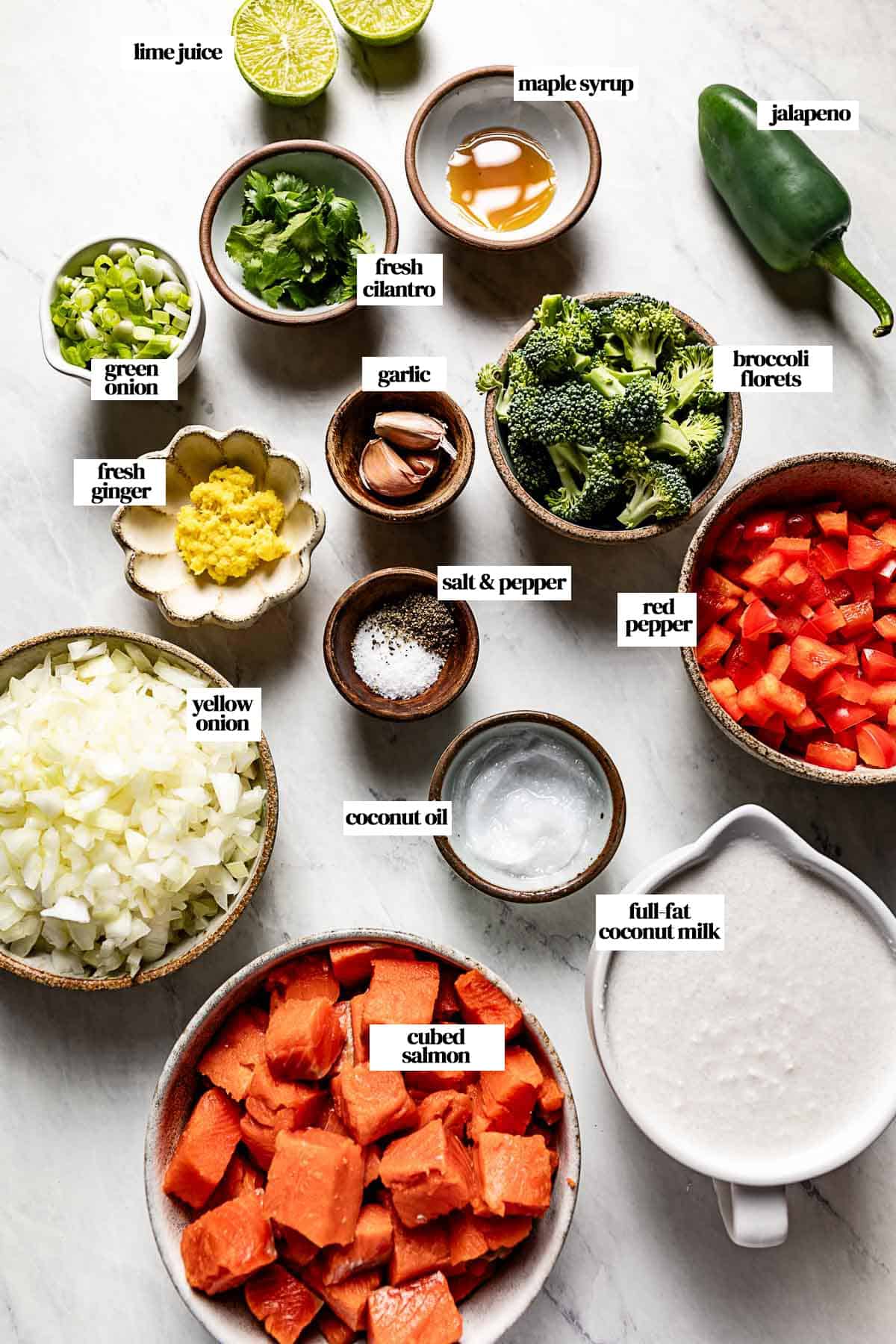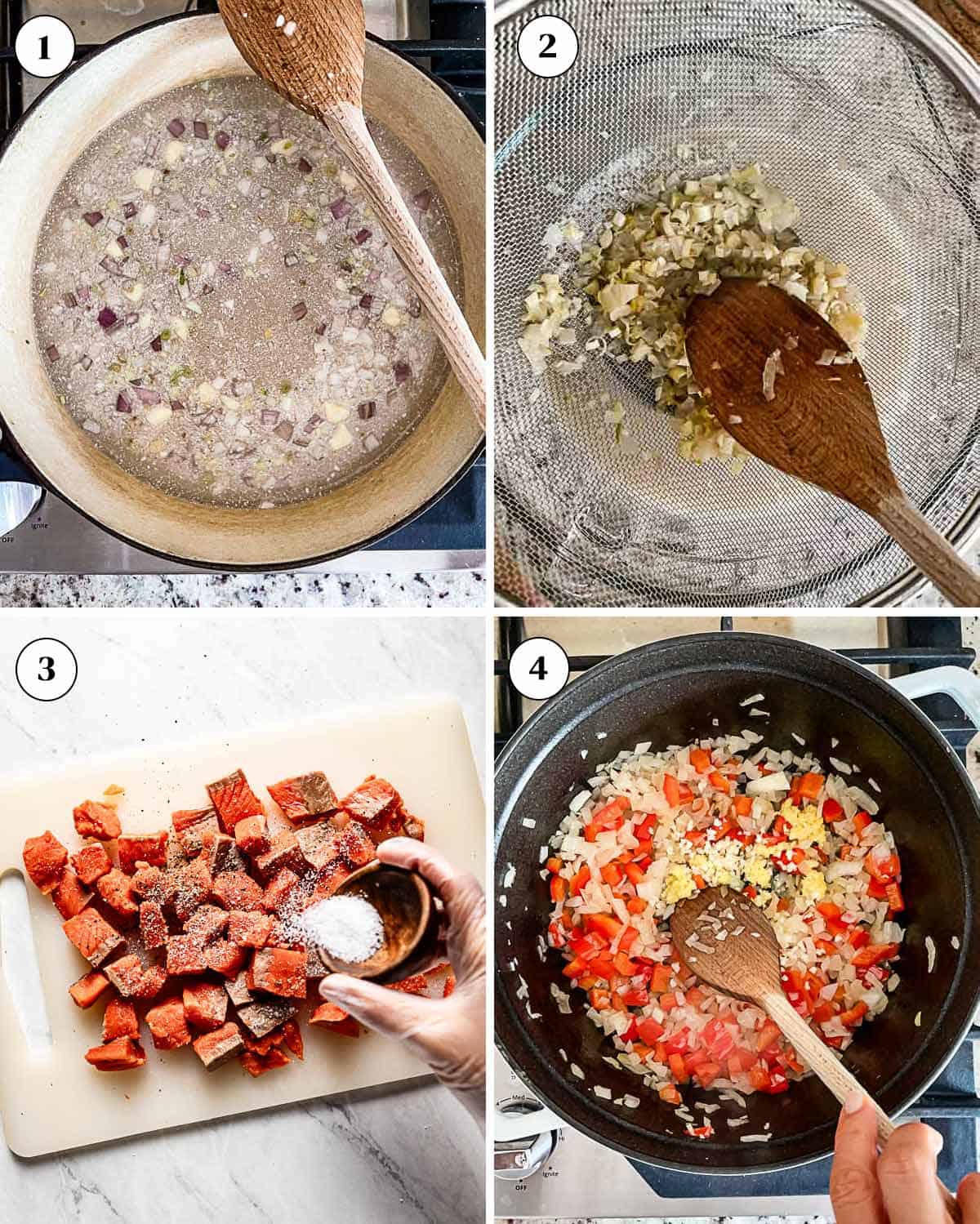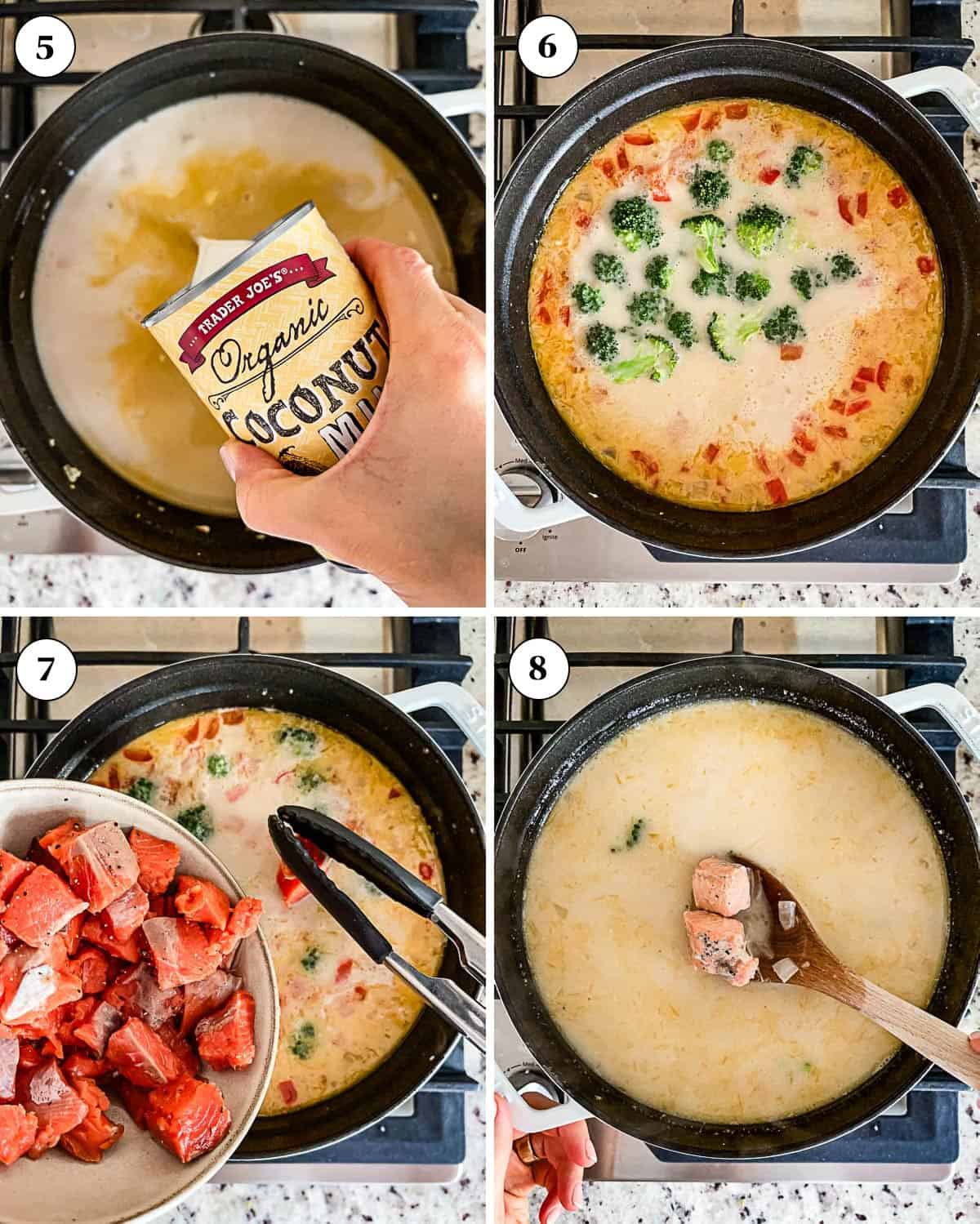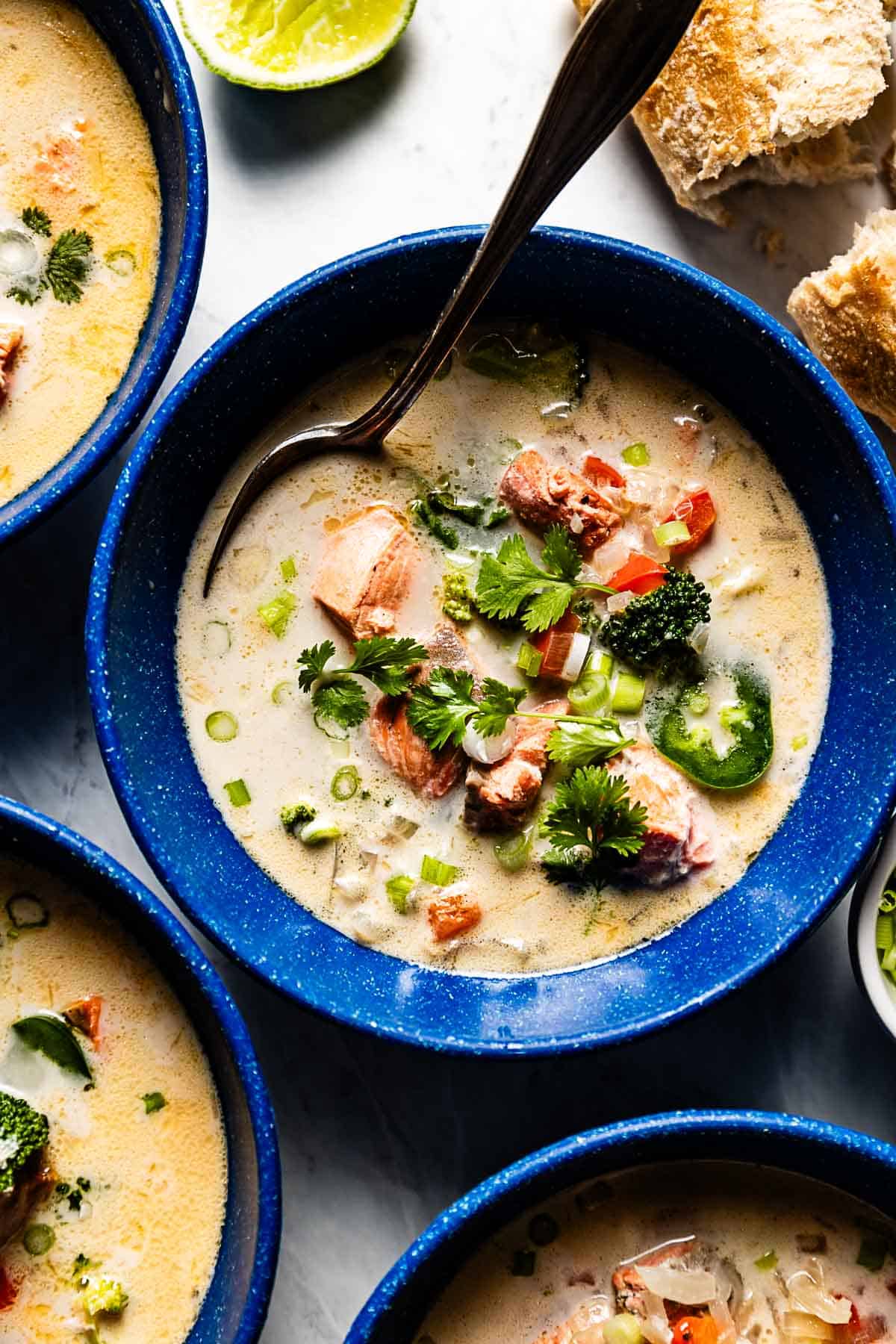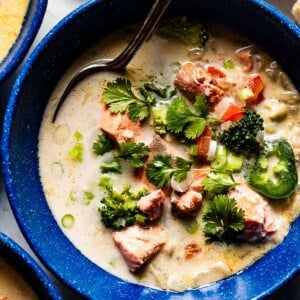Ingredients
The ingredients for this Thai salmon soup are broken down into two parts for ease – Thai coconut broth and salmon soup. Here’s a look at what we need for each one:
Thai Coconut Broth
Vegetable Broth: One quart of either low sodium store bought or homemade vegetable stock (or Vegetable Scrap Stock) will work. Chicken Stock is another option, but I find the vegetable stock to work better with the salmon. Coconut Milk: Use one full-fat can of unsweetened coconut milk, shaken or blended until smooth. Aromatics: These include fresh ginger, shallots and garlic, all minced to the finest texture. Lime Zest: Lime zest offers that extra bit of zing and adds a sour note to the overall flavor. Lemon grass: If using fresh lemongrass stalks, remove the tough outer layers, smash it gently to release its oils and slice the bottom white portion (the dark green portion can be discarded). If you can’t find fresh lemongrass, 1 Tablespoon storebought Lemongrass paste is a great substitute.
Salmon Soup
Wild Salmon Fillet: Wild Alaskan salmon or wild sockeye salmon are both delicious here. Feel free to leave the skin on or remove the skin depending on your preference. Also make sure to check parts of the salmon for pin bones before slicing them into 1-inch pieces. If using frozen salmon, thaw overnight in the refrigerator. Coconut Oil: Coconut oil rounds out the coconut flavor, but olive oil, sesame oil, or avocado oil can also be used. Yellow Onion Pepper: Red peppers, yellow or orange bell pepper all work here. Fresh Ginger Garlic Cloves Coconut Milk: Use another can of coconut milk, blended or shaken until smooth. Broccoli: For best results, make sure to cut the broccoli head into small florets, or bite size pieces. Lime: A final squeeze of fresh lime juice at the end brightens the richness of the coconut broth and gives it a tangy finish. Maple Syrup: Maple syrup balances the heat from the ginger. Brown sugar or coconut sugar will also work. Garnish: Garnish each bowl of soup with freshly sliced green onion, fresh cilantro and jalapeno slices or serrano chiles just before serving.
How to Make It?
Whether you call it salmon belly soup or salmon chowder, this delicious and nutritious meal comes together in under 1 hour. Here’s how I like to do it from start to finish:
How to Make Ahead, Store & Reheat Leftovers?
Since poached salmon soup is technically made in two parts, you can prepare the coconut lemongrass broth ahead of time and keep it in the fridge until the day you are ready to serve. To do so, simply:
Make Ahead: Prepare the stock 1-2 days in advance and store in an airtight container in the fridge. With the stock already prepared, the recipe should only take about 20 – 30 minutes from start to finish. Store: Leftover salmon soup will keep in the fridge for up to 3 days in an airtight container. Reheat: Reheat in a saucepan on the stove over medium-low heat until steamy and warmed through. Freezing: We do not recommend freezing this soup as the poached salmon will not thaw well. However, you can certainly make the coconut broth, bring it to room temperature, and freeze it by itself to make this soup at a later time.
What to Serve it With?
This fish coconut soup is a gorgeous meal that can be served any night of the week. While it is a complete meal all on its own, you can serve it with:
Cooked Rice: For a more filling meal, serve it with a side of Brown Jasmine Rice, Black Rice, or Rice Noodles. Asian Salad: To celebrate Thai salmon soup and all its flavors, serve it with Forbidden Rice Salad or Thai Quinoa Salad. Bread: Soak up all the deliciousness of this coconut salmon soup with Naan Bread or Crusty No Knead Bread. Steamed Vegetables: Keep it healthy and light with Steamed Asparagus or Steamed Store Bought Veggies.
Other Seafood Recipes You Might Also Like:
Barefoot Contessa Shrimp Salad Grilled Blackened Mahi Mahi Breaded Fish Curry Tomato Soup with Shrimp
If you try this Salmon Coconut Soup recipe, please take a minute to rate the recipe and leave a comment below. It helps others who are thinking of making the recipe. And if you took some pictures, be sure to share them on Instagram using #foolproofeats so I can share them on my stories.
Cut the broccoli into small pieces. Smaller pieces make for a faster cooking time, which means your broccoli will be tender, not crunchy. Do not overcook the salmon. For best results, add the salmon at the very last minute of simmering and immediately turn off the heat. The salmon will continue to cook in the residual heat from the soup. Taste test as you go. The key to Thai cuisine is its use of salty, sweet, spicy, sour, and umami flavors. Taste and adjust the seasonings as you go for a delicious and well-balanced meal.


